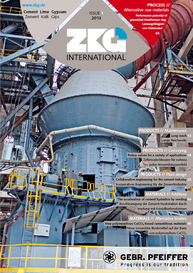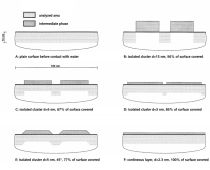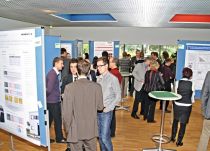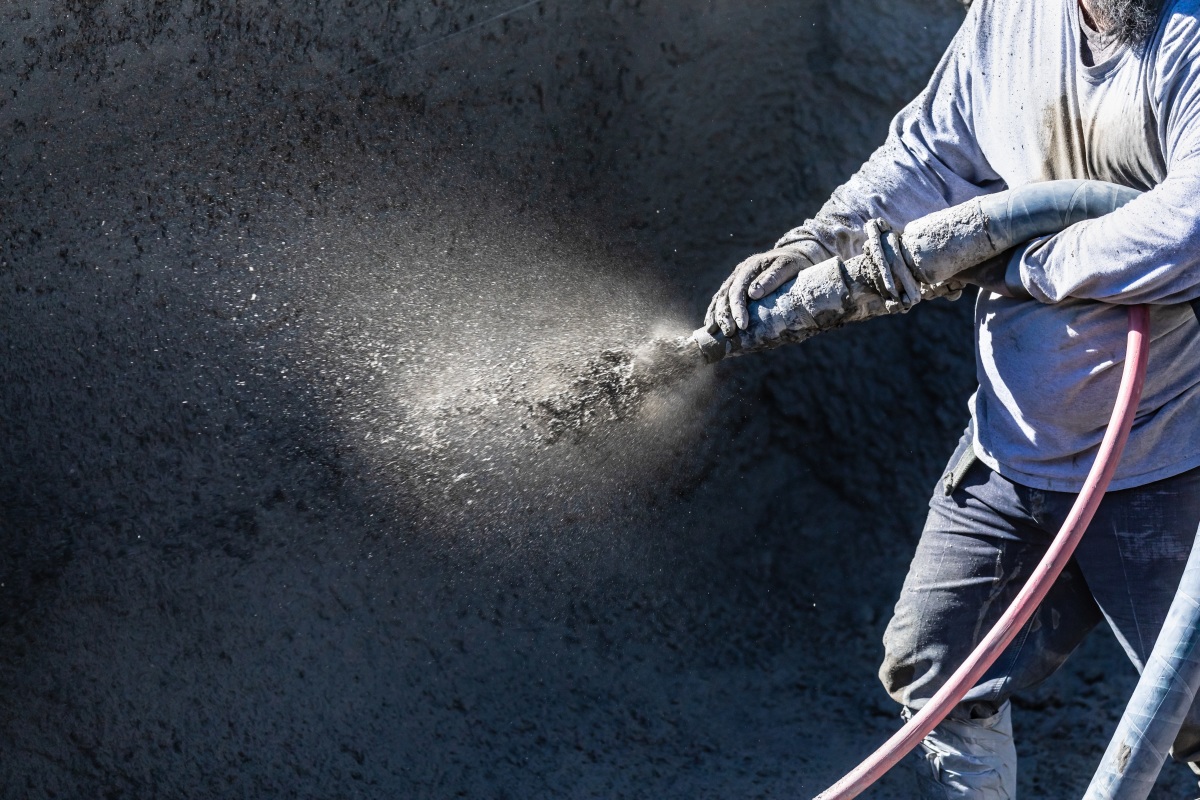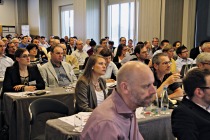Thermodynamic modelling of cement hydration and eco-efficient concretes
The following three days were taken up entirely with the thermodynamic modelling of cement hydration (Figure 2). Modelling of the interaction between the aqueous and the solid phases by means of geochemical specification codes can be used as the basis for more profound chemical comprehension of the processes of cement hydration. The development against time of the composition of the solid phases and of the pore solution during hydration of Portland cements, Portland cements containing mineral additions, and other hydraulic binders, such as alkali- and sulphate-activated blast furnace slags and calcium sulphoaluminate cements can, inter alia, be predicted in this way.
Dr. Barbara Lothenbach, Dr. Frank Winnefeld (both of Empa, Switzerland) and Dr. Cyndy Iñiguez Sanchez (University of Monterrey, Mexico) headed this part of the course. The GEMS-PSI (gems.web.psi.ch/) geochemical software was used, in combination with the cement-specific CEMDATA07.b (//www.empa.ch/cemdata" target="_blank" >www.empa.ch/cemdata:www.empa.ch/cemdata) data-base. The participants were familiarised with the background and the basic features of the software, and were able to practice what they had learned on their own PCs, working through numerous exercises of increasing difficulty. The phases which occur during hydration of C3A with and without the addition of calcite and/or anhydrite were, for instance, modelled. More complex examples examined the hydration of Portland cement. In this case, the influence of various additives (e.g. limestone, silica fume and fly ash), and of temperature, on the hydrate phases and the pore solution were simulated, inter alia.
A seminar on the subject of “Eco-efficient concretes: Advances and challenges”, with some sixty representatives of research and industry participating, took place after the course, on September 25, 2012. Following an introductory address on this topic by Prof. Vanderley John, Dr. Arnaldo Battagin (Associação Brasileira de CimentoPortland) firstly provided an overview of the potentials of new binders for replacement of Portland cement. Dr. Barbara Lothenbach (Empa, Switzerland) then outlined how thermodynamic modelling can be used to gain new information on cement hydration concerning, for example, the use of additives such as ground limestone, ground granulated blast furnace slag (GGBFS) or microsilica. Dr. Frank Winnefeld (Empa, Switzerland) reported on the interaction of superplasticizers on a polycarboxylate ether basis with cement and with pure hydrate phases. Prof. Rafael Pileggi (University of Sao Paolo) described how it is possible to exploit the cement content of concrete optimally with respect to strength gain and durability. The significance of the lime filler for cement hydration and concrete properties, and for durability, in particular, was illustrated by Prof. Edgardo Irassar (University of Buenos Aires, Argentina). Dr. Bogdam Cazacliu (IFFSTAR, France) described how an optimised mixing technology is capable of improving the properties of the finished concrete. Calcium sulphoaluminate types as a potentially CO2-friendly alternative to Portland cement were the focus of Dr. Frank Winnefeld‘s closing paper.
The organisers wish to thank their sponsors (Associação Brasileira de Cimento Portland, Grace Construction Products, Holcim, Instituto Brasileiro do Concreto, InterCement, PANalytical, University of Sao Paulo, FDTE and FAPESP), who provided financial support for the seminar.

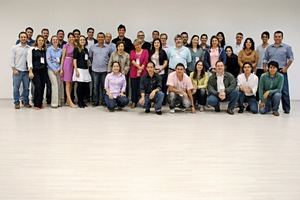
![Thermodynamic modelling of the hydration of Portland cement [1]](/uploads/images/2013/w268_h157_x134_y78_101531158_3b8de063f4.jpg)
